Mystery High Altitude Cloud, May 13, 1999
Steven Dutch, Professor Emeritus, Natural and Applied Sciences, University of Wisconsin - Green
The cloud pictured here (photos taken from Green Bay, Wisconsin looking northwest) was still sunlit long after cirrus clouds (5-6 km altitude) had gone dark. The cloud was about 5 degrees above the horizon. Although the last frames are quite dark, remnants of the cloud were visible and brighter than the sky even then. Thus the cloud must have been at a very high altitude.
The sun set at about 8:15 CDT in Green Bay that evening and was about 3.5 degrees below the horizon by the time the cloud vanished around 8:50 P.M. Call the location of the cloud C, the center of the Earth X and let H be the location of the horizon as seen from C (the farthest point on the ground just visible from the cloud). If the sun was just grazing the horizon as seen from the cloud, then angle CHX = 90 degrees and HCX = 90-3.5 = 86.5 degrees. Thus angle HXC (the angle at the center of the Earth) is 3.5 degrees. Put another way, an observer 3.5 degrees (almost 400 km) away would just see the cloud on the horizon. Distance XH = 6400 km, the radius of the Earth. Distance XC = 6400 + h (height of the cloud) = 6400/cos(3.5). Solving for h, we find that the cloud was at an altitude of at least 12 km. If we allow another degree for atmospheric refraction, the elevation was almost 20 km.
Possibilities include:
- Nacreous or Mother-of-Pearl Cloud A rare high-altitude ice cloud (20 km). Probably the most likely explanation. The altitude and appearance are right.
- Noctilucent Cloud These super high-altitude clouds (50 km) are almost never seen below 50 degrees north so if this is a noctilucent cloud, it would be among the southernmost ever seen. It seems to have been too low, as well.
- High-Altitude Contrail Wisconsin is far from any major missile launch sites, although a sounding rocket might be the source. A very high-altitude military aircraft is another possibility. 20 km (65,000 feet) is easily within reach of many military aircraft.
- Meteor Trail Dennis di Cicco of Sky and Telescope said that the cloud is too persistent and uneven in brightness to be a likely meteor trail. However, a twilight fireball was reported from Vilas and Price Counties that evening, in perfect agreement with both the direction and timing.
8:33 P.M. CDT
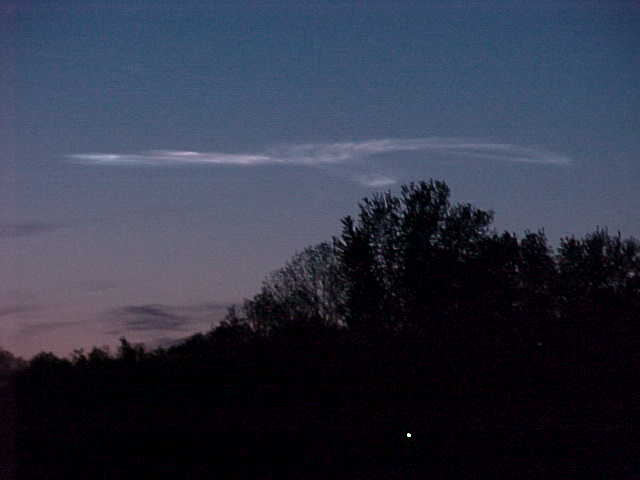
8:33 P.M. CDT
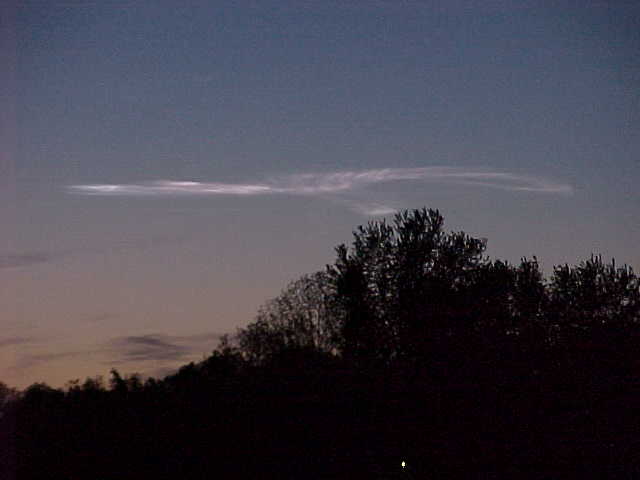
8:34 P.M. CDT
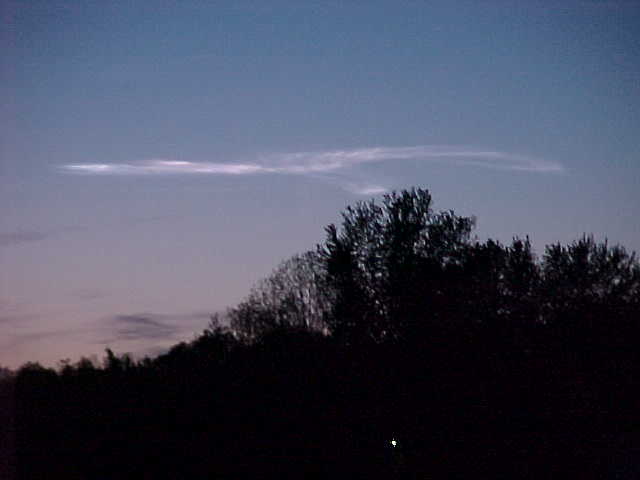
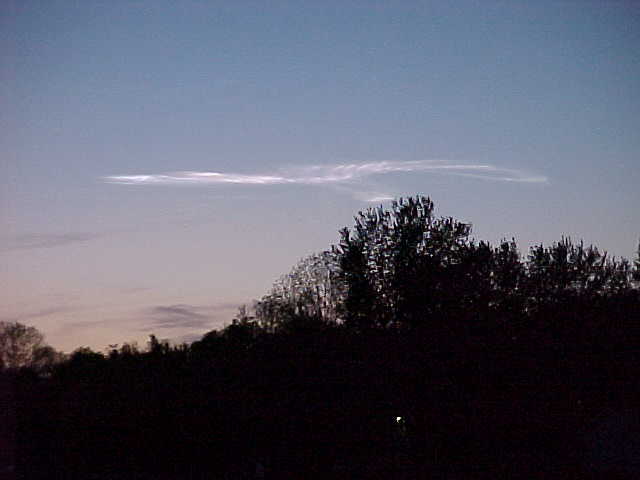
8:37 P.M. CDT
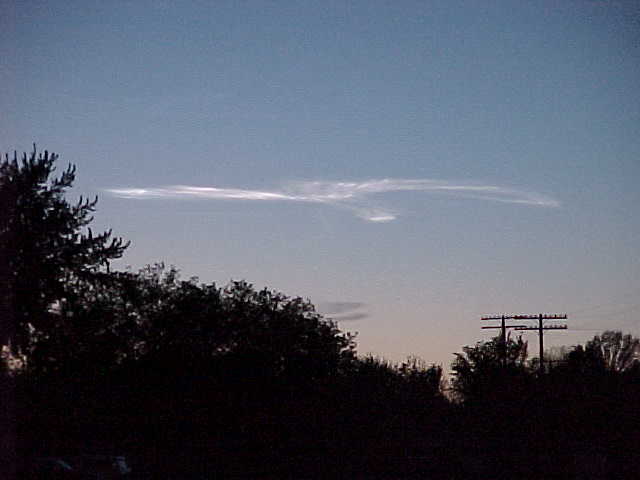
8:38 P.M. CDT
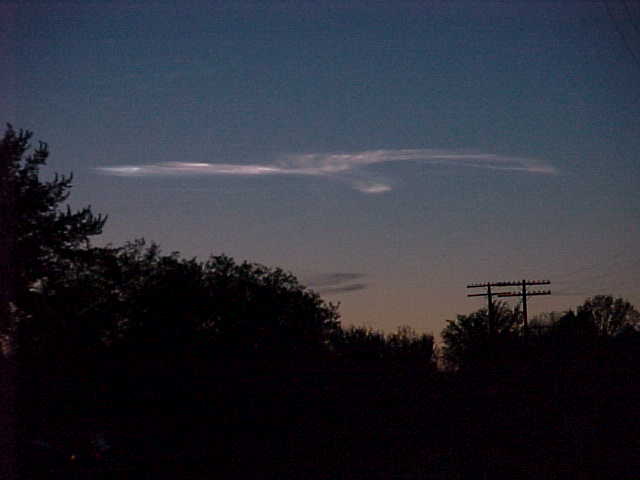
8:41 P.M. CDT
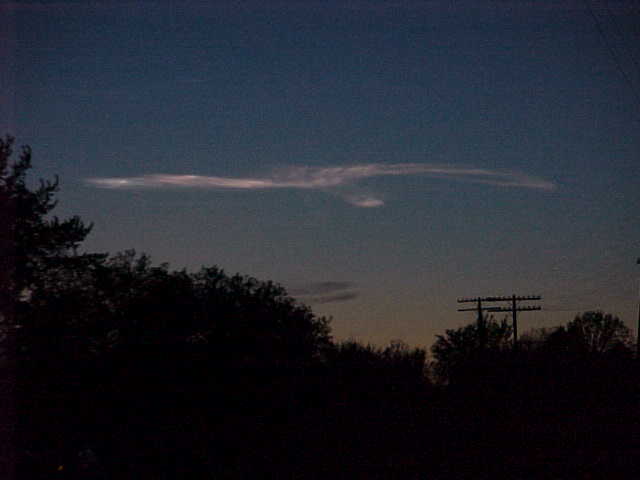
8:43 P.M. CDT
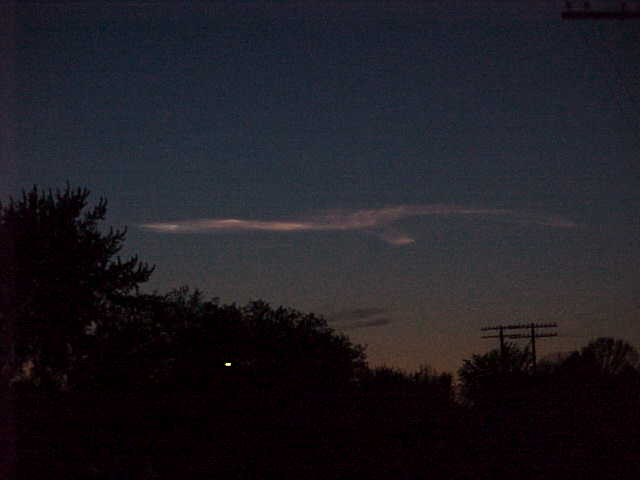
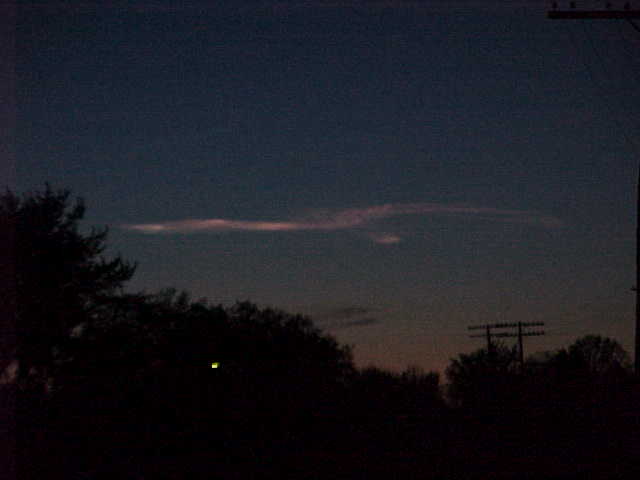
8:44 P.M. CDT

8:45 P.M. CDT

8:47 P.M. CDT
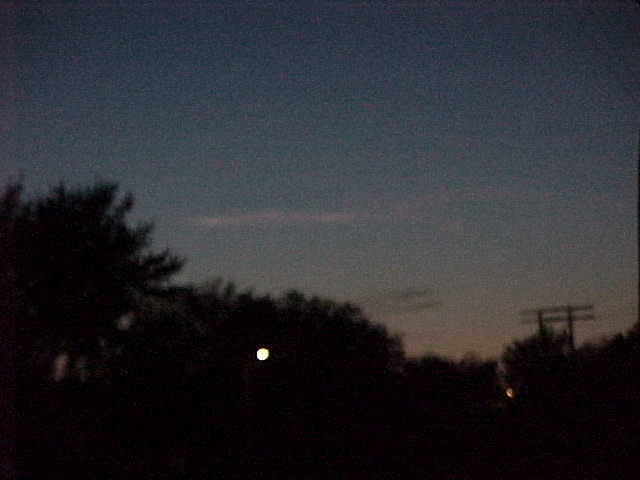

8:48 P.M. CDT


8:49 P.M. CDT

8:50 P.M. CDT
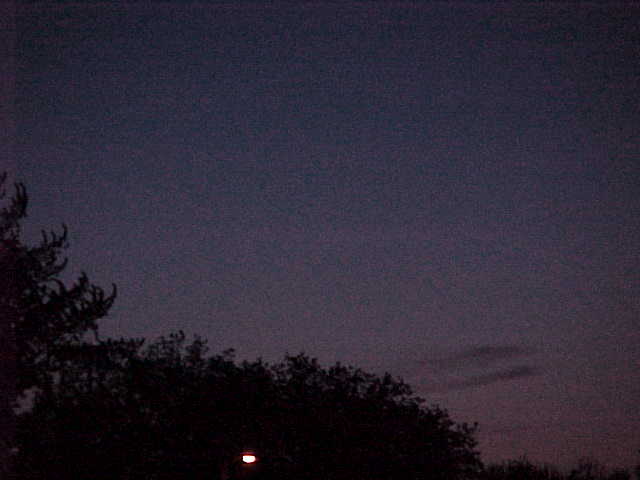
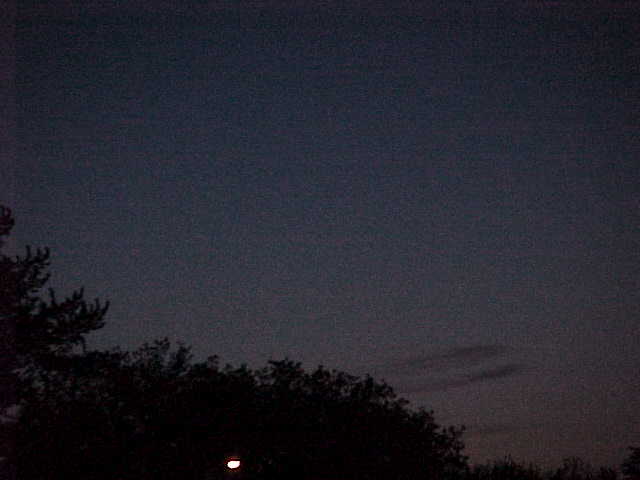
Return to Geology of Wisconsin Index
Return to Wisconsin Weather Index
Return to Geologic Localities Index
Return to Professor Dutch's Home Page
Created 19 May 1998, Last Update 19 May 1998